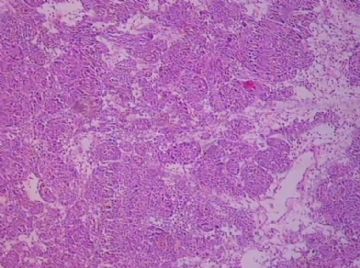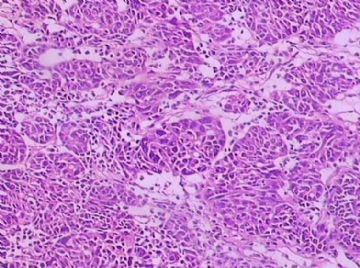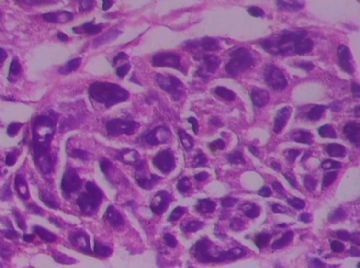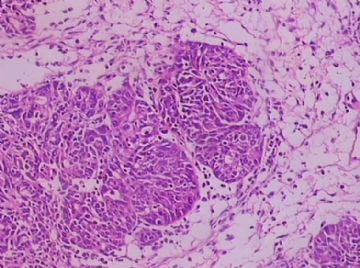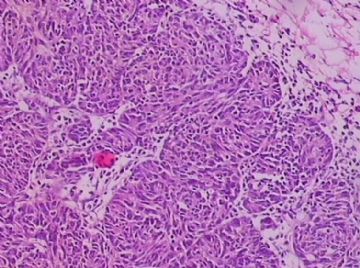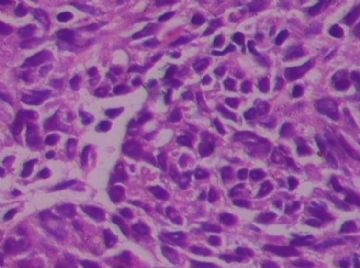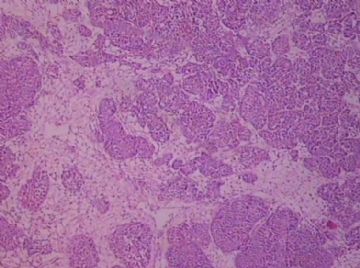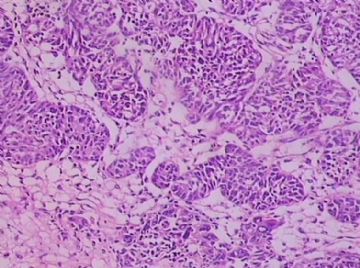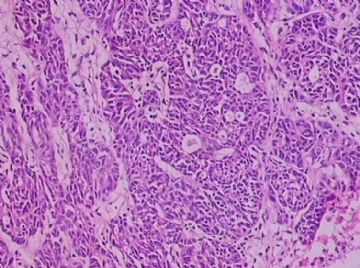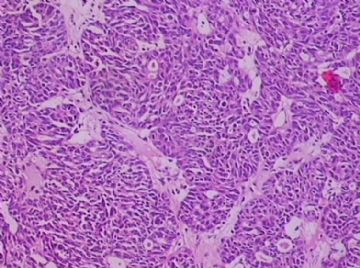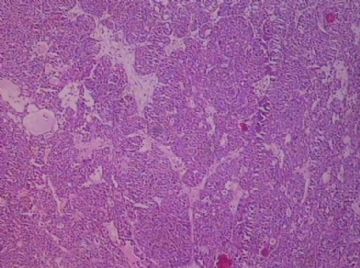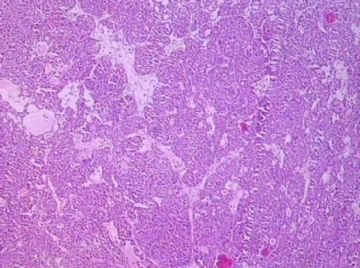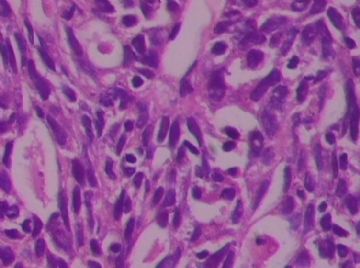| 图片: | |
|---|---|
| 名称: | |
| 描述: | |
- 卵巢肿物,是不是支持莱狄细胞瘤?(最后结果:卵巢恶性肿瘤…见后)
-
huisheng97 离线
- 帖子:263
- 粉蓝豆:22
- 经验:285
- 注册时间:2009-02-13
- 加关注 | 发消息
好病例。谢谢千百合和cqzhao,澄清了我的认识误区。现有的免疫组化支持(或符合或倾向于)卵巢原发的移行细胞癌。
我体会的鉴别诊断思路:
1 原发or继发
2 低分化癌or粒层细胞瘤
3 低分化癌的类型鉴别:浆液性癌、内膜样癌、移行细胞癌TCC
卵巢TCC:Vimentin、CK7和CA125阳性,而uroplakin III、thrombomodulin和CK20阴性。膀胱TCC正好与之相反。
加做CK5/6可能有助于排除浆液性癌。

华夏病理/粉蓝医疗
为基层医院病理科提供全面解决方案,
努力让人人享有便捷准确可靠的病理诊断服务。
-
本帖最后由 于 2009-03-12 18:12:00 编辑
卵巢恶性肿瘤伴大片坏死,考虑为恶性Brenner瘤可能性,建议多取材进一步确诊
No any meaning to challenge our professor's dx.
Should diagnosed as ovarian high grade carcinoma (tumors including many categeries). Favor TCC. Do more IHC to work out. More sections may not help.
abin译:
绝不是挑战教授的诊断。
我认为应该诊断为卵巢高级别癌(tumor 包括很多类型的肿瘤, not a good term here),倾向于移行细胞癌。加做免疫组化进一步分类。多取材多切片可能没有帮助。
-
本帖最后由 于 2009-03-06 21:43:00 编辑
Based on the IHC results, sex cord stroma tumors are out.
It is a high grade carcinoma.
ER+, CK7++: gynecologic carcinoma or breast carcinoma.
The morphology does not support the breast tumor. Also need to know if the women has breast carnoma history.
Now we can narrow down to ovarian high grade carcinoma if patient has no uterine tumor.
The differential dx include transitional carcinoma (if we call maligant Brenner tumor, we need to see some benign brenner tumor), poorly differentiated endometrioid carcinoma, and high grade serous carcinoma.
WT1 is positive in 80-90% of high grade serous ca and TCC, but is negative for endometrioid ca.
P53 is positive for most of high grade serous ca and TCC, but is negative for most endometrioid ca.
CK 5/6 is positive for 60-70% TCC, but is negative for serous ca. CK5/6 is positive the squamous differentiation component in endometrioid ca.
Based on current IHC and cytomorphologic features, TCC is possible.
If we consider the TCC, the importance is that we need to rule out the metastatic bladder TCC. Of cause clinical information is important. Besides ER, some immunostains can be helpful.
Bladder TCC: positive for uroplakin III, thrombomodulin, and CK20
Ovarian TCC: above three makers are negative in most cases.
One thing we should remember that more than half of benign Brenner tumors of ovary are positive for uroplakin III and thrombomodulin, indicating the urothelial differentiation. But why overain TCCs are negative. Who know?
Anyway my analysis is for your reference.
abin译:
根据免疫组化,可以排除性索-间质肿瘤。它是高级别腺癌。
ER+, CK7++: 妇科癌或乳腺癌。但形态学不支持肿瘤,也需要了解是否有乳腺癌病史。
现在考虑范围缩小到卵巢高级别腺癌,如果没有子宫腺癌病史的话。
鉴别诊断包括移行细胞癌(如果称为恶性Brenner肿瘤,需要看到一些良性Brenner肿瘤成分)、低分化内膜样癌和高级别浆液性腺癌。
WT1在高级别浆液性腺癌和移行细胞癌的阳性率为80-90%TCC, 但内膜样癌阴性。
P53在高级别浆液性腺癌和移行细胞癌几乎均为阳性,但大多数内膜样癌阴性。
CK 5/6 在移行细胞癌的阳性率60-70%,但浆液性癌阴性。CK5/6在内膜样癌的鳞状分化成分为阳性。
根据现有的免疫组化和形态学特点,移行细胞癌是可能的。
如果我们考虑移行细胞癌,重要的是需要排除转移性膀胱移行细胞癌。当然,临床资料很重要。除了ER,其它免疫标记可能有帮助。
膀胱移行细胞癌的阳性标记物:uroplakin III, thrombomodulin, and CK20
卵巢移行细胞癌:大多数病例上述三种标记物阴性
我们应该记得一点:超过半数的卵巢良性Brenner肿瘤为uroplakin III和thrombomodulin阳性,提示尿路上皮分化。但为什么卵巢移行细胞癌阴性?谁知道?
总之我的分析仅供参考。
是有象支持莱迪细胞瘤的地方,比如:管状排列,葵花籽样的细胞等。但是莱迪细胞成分不明显。细胞分化不好,肯定不是良性的支持细胞瘤,但是单纯的支持细胞癌是很罕见的。
粒层细胞瘤不能排除,它与男性性索间质肿瘤鉴别主要是组织形态,免疫组化几乎没有帮助。

- If you have great talents, industry will improve them; if you have but moderate abilities, industry will supply their deficiency. 如果你很有天赋,勤勉会使其更加完美;如果你能力一般,勤勉会补足其缺陷。

